Oolong or wulong is a broad category of teas, in the spectrum between green and black tea, that originate in China. What sets oolong apart is that it can be processed with various different oxidation and roasting levels. The unique variations in the process to produce oolong create a wide array of flavors and sensations. Oolong can taste fresh, green, floral, fruity, roasted, woody, nutty, or honey-sweet, so this is a type of tea that can appeal to virtually all taste buds. Different tea plant varietals, seasons, styles, and regional terroir also influence flavor.
The many variables that go into crafting oolong make it an ever-changing and fascinating tea. In this guide, you'll learn how to start exploring and enjoying oolong, the best brewing methods, how to store it properly, and more.

Tieguanyin oolong tea from Fujian province
What exactly is oolong tea?
All tea starts as fresh tea leaves from the Camellia sinensis plant, but each type of tea then goes through specific steps to graduate to the finished product that makes it into your teapot. Oolong undergoes a unique process of oxidation, sometimes followed by roasting, to achieve its complex flavors and aromas.
Like all teas, oolong is first picked, then dried or withered. Large tea plantations typically use machines to pick and process, while smaller operations producing higher-quality oolong will perform these steps by hand to ensure the delicate leaves and buds remain intact.
The withering step involves laying the fresh leaf on trays to slowly remove moisture from the leaves. Some oolongs are also shaken or tossed during this step in order to bruise the leaves and break the cell walls to encourage oxidation. If you’re unfamiliar with oxidation, think about pressing your finger into a banana. After some time passes the bruised area will begin to oxidize and change color. In the case of oolong tea, the leaves will change from green to red.
But where oolong differs from most other teas is that it's partially oxidized.
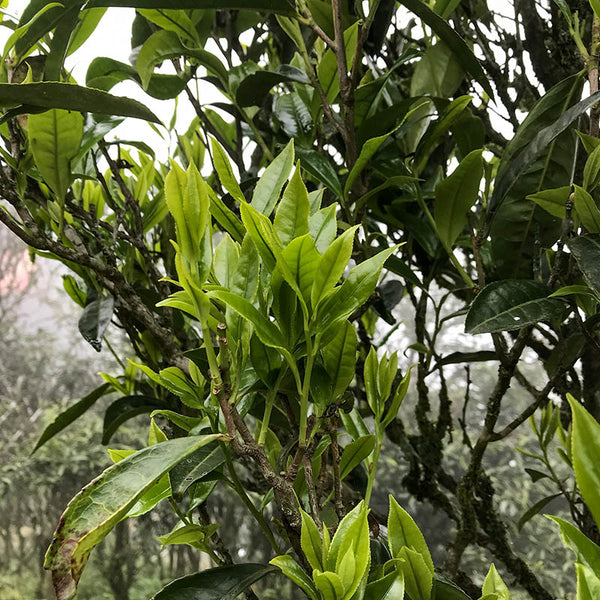
Fresh growth on Dancong tea plants in Guangdong province
Oxidation and Kill-green
Oxidation begins immediately after harvesting, when a natural enzyme in the tea leaves begins to break down tea compounds. After the withering step, oolong leaves are either twisted or rolled into a ball shape, which helps to encourage and control the oxidation process. As with the other processing steps, the highest-quality oolong is usually twisted or rolled by hand, which is a very meticulous and labor-intensive process.
The degree of oxidation varies greatly among different types of oolongs. For comparison, green tea is the least oxidized tea (close to 0% oxidation), while black tea is fully oxidized (100% oxidation).
So, as you might expect, low-oxidation oolongs like tieguanyin, also frequently called Iron Buddha, will have characteristics in common with green tea: fresh, bright, grassy, or vegetal notes, often with hints of bitterness or astringency. The tea broth from these leaves can be greenish, yellow-green, or light gold.
In contrast, oolongs that undergo more oxidation like Milan Dancong will darken as they begin to develop sweeter, fruitier notes and hints of spices, similar to black tea. They're also smoother and often thicker-bodied, with dark golden or reddish tea soup.
However, oolong is not identical to either green tea or black tea, and a lot of the special magic happens between 0% and 100% oxidation. A mid-oxidized oolong like the peculiarly named Duck Shit Dancong will offer a surprising mix of characteristics, with intense floral aromas and flavors.
The final step of production is "killing the green" with heat, which is how tea producers halt oxidation at the desired level — at this stage, the heating process destroys the enzyme responsible for oxidation. This is either done in a wok or large tumbling machine, which is sometimes followed up by a roasting process (often using charcoal for roasting, like with Dahongpao rock oolong).

Dancong oolong chatou, a fruity and flavorful lower grade of oolong tea
What does oolong tea taste like?
There are teas like yancha, sometimes called rock oolong, that have roasted minerality and dark umber character. Dancong oolongs often have fruity, floral and honey-filled notes backed with intense body and sweetness. Tieguanyin is a classic oolong that can range from seaweed and charcoal vegetal notes to flowery sweetness.
Oolong has a wide range of flavor profiles, so much so that it’s a wonder such diverse teas can exist under such a massive umbrella of a category.

Tieguanyin oolong Type A ready to be brewed gongfu style
How to brew and enjoy oolong tea
Gongfu style tea brewing highlights the complexity and aroma of Oolongs the best. Try 5 to 7 grams of tea in a small, ~100-ml (3.5-ounce) gaiwan or teapot, and multiple quick infusions with boiling water. For future explorations into the tea, try using more or less leaf material to find what you enjoy best.
For less-oxidized oolongs with a more green presentation, you may also use cooler water to reduce bitter flavor. You do not necessarily need to pre-rinse all oolongs with hot water, but rinsing rolled ball oolong will open up the flavor quicker.
Oolong has a remarkable aroma. At each stage of brewing, stop to enjoy the smell of the leaves in the gaiwan or teapot, as well as the smell of the fresh tea soup. Your empty tea cup will also have its own unique fragrance and the aromas will shift from second to second, so take your time! Enjoying tea is not a race.
Chaozhou style brewing is another option for steeping your tea that is traditionally used for Dancong oolongs. This method involves packing your vessel very full of dry leaf and brewing with flash steeps (pour the boiling water on, pour the boiling water off). This style, which is best made using a Dancong oolong, produces a uniquely intense brew that isn’t for everybody.
Besides gongfu style, you can also make oolong with the ultra-simple grandpa style brewing method. Add 2 or more grams of oolong to a large mug and sip. Refill with hot water when you drink it down to half. Grandpa style is quick, travels well, and you may even discover new flavors this way.
For Western style brewing using a large teapot, you can use a few grams of oolong with a longer 3-5 minute steep time. This may sacrifice some of the nuance of your oolong tea, but for some people the convenience makes it an ideal alternative for tea-making when the schedule is full.
Whatever style you make your oolong, the leaves expand greatly. We recommend you brew oolong leaves with space to swell up and release flavor. As always, don’t be afraid to experiment with how you brew!

Oolong tea being oxidized on trays in Guangdong province
Frequently asked questions (FAQs) about oolong tea
How much does oolong tea cost?
Affordable, good-quality oolong tends to cost around 20-25 cents per gram, while the premium-quality leaves will run closer to a dollar a gram. To put this into perspective, a 6-gram gongfu session with entry-level oolong would therefore cost about $1.50, while a high-end session would be around $6.
The main factors that affect oolong prices are regional location, scarcity, and processing costs. Highly sought-after areas of Wuyi Shan might have very expensive rougui yancha, whereas less costly rock oolongs from further outside of the most expensive areas also exist. Similarly, rare oolongs from higher altitudes and older trees might command a higher price, whereas less visually attractive Dancongs can be had for a bargain price.
Processing is another big consideration for oolong costs. For example, some less-expensive teas might be machine-roasted (nothing wrong with this at all, they’re great teas), but to pay an experienced oolong maker to charcoal roast your teas by hand is a whole different tier of quality and price.
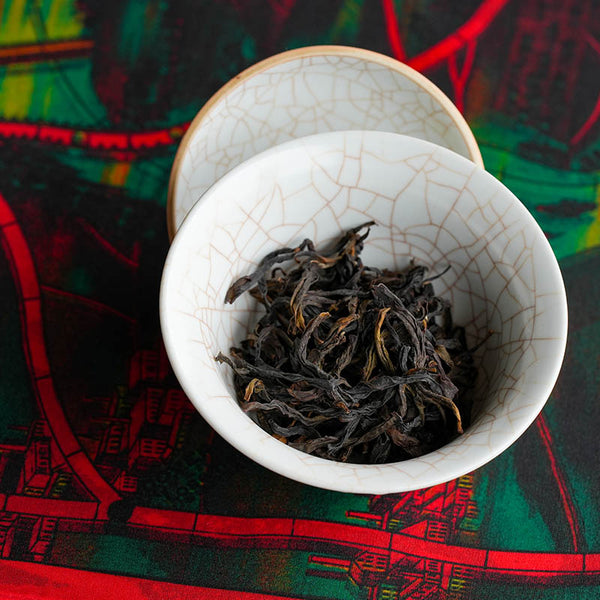
Finished Dancong oolong tea from Guangdong province
What is the best way to store oolong?
The best practice to store oolong is to keep it sealed in a container that is not exposed to light or the outside environment. Odors, extreme temperatures, and sun exposure will negatively influence the tea’s flavor and aroma.
Otherwise, oolong does not go bad and can be stored for a long time — in fact, well-stored aged oolong is often prized. However, the oolongs that age the best tend to be either charcoal-roasted, highly oxidized, or both.
Also, unlike Puer tea, which can be aged and stored in high-humidity environments, uncontrolled levels of oxygen and humidity can cause greener oolongs to "sour" over time, though this isn't always the case.
If you have a large stash of "green" or minimally-oxidized oolong, you may set aside some tea sessions worth of drinking and vacuum seal any large portions to preserve the floral freshness. You may also consider only purchasing smaller quantities of green oolong to drink before the next season’s crop is available.
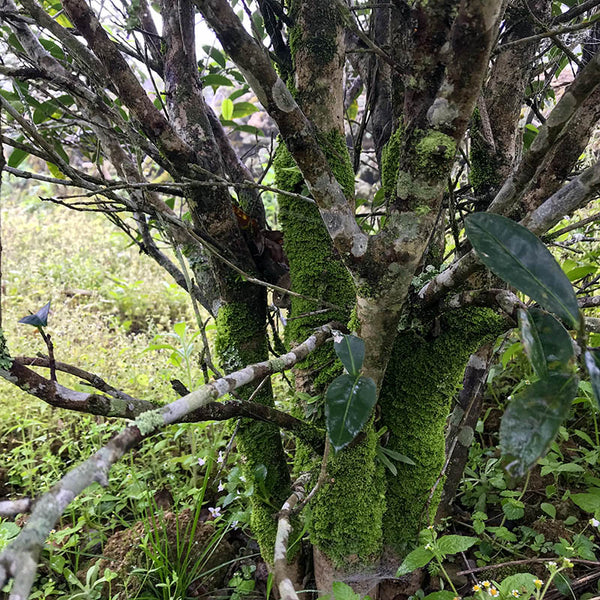
Old arbor Dancong oolong trees in Guangdong province
What is special about oolong tea?
Oolong is the aromatic champion of tea. For lovers of big fragrance, look no further than oolong. Other categories, like ripe or raw Puer tea, black tea or white tea can rarely compete with the intensity of aroma that oolong offers.
Even within a single oolong tea session, the flavor profile can shift from steep to steep, like our classic tieguanyin which shifts from roasted to fruity or our Meizhan which drifts from the charcoal roasted character into a deep minerality. For a completely different ride, our honeyed pomelo Dancong is a sweetness soaked citrus experience bursting with florals.
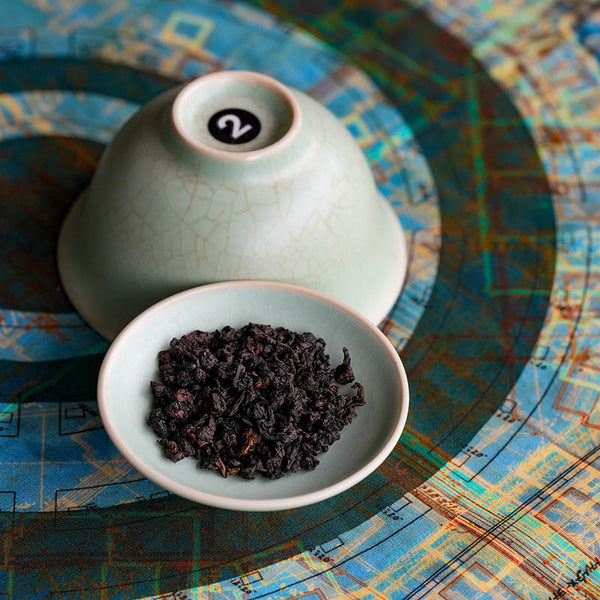
Our heavily roasted Canton Canon, a charcoal roasted Tieguanyin oolong tea
Is oolong tea high in caffeine?
The factors that contribute to the caffeine content of any given tea infusion are complex, but generally teas that have a higher bud content with less processing will have higher caffeine content. For example, a tieguanyin that has been roasted like our Three Spot Guanyin will pack less of a caffeine punch than a bud-heavy white tea like our 2023 Lullaby.
Larger, more mature leaves also tend to have less caffeine and roasting can further reduce the overall caffeine content.
As a starting point for understanding, any serving of any tea will have significantly less caffeine than an 8-ounce cup of strong American black coffee. If you're looking to reduce your caffeine intake with tea, one strategy is to use less leaf (fewer grams) with shorter steep times, as this will help you limit the amount of caffeine extracted in your infusion.
Conversely, if you’re looking for an energizing or highly-caffeinated experience, you can increase the concentration (grams) and extend the steep times for a more intense brew! If you drink enough tea, you can get plenty of caffeine, trust us on that.
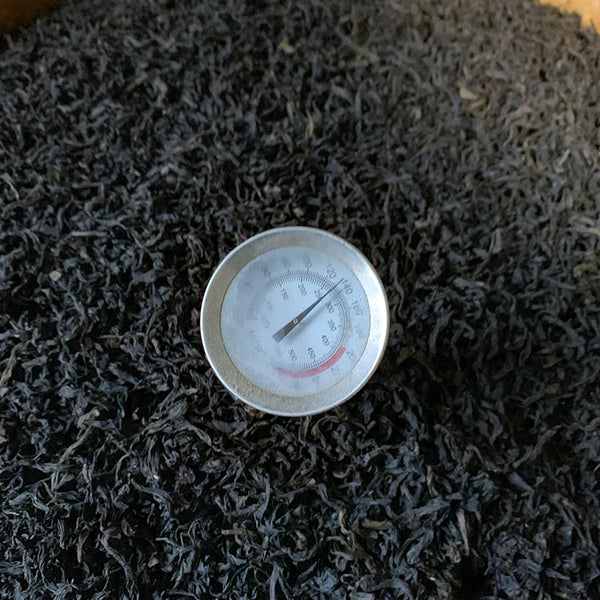
Yancha oolong in the Wuyi Mountains being charcoal roasted by hand
Is oolong tea green or black?
All tea comes from the same leaf of the Camellia sinensis plant, but what differentiates tea types like green, black, and oolong tea is the processing. Oolong tea is not green or black tea, but its own category of tea, which has an oxidation level somewhere between 1%-99%.
For reference, a green tea is a tea that is 0% oxidized, whereas a black tea is fully 100% oxidized, while oolongs are between these. These definitions of which tea is which are a little bit flexible in some circumstances, but this is generally how oolong tea is defined.

